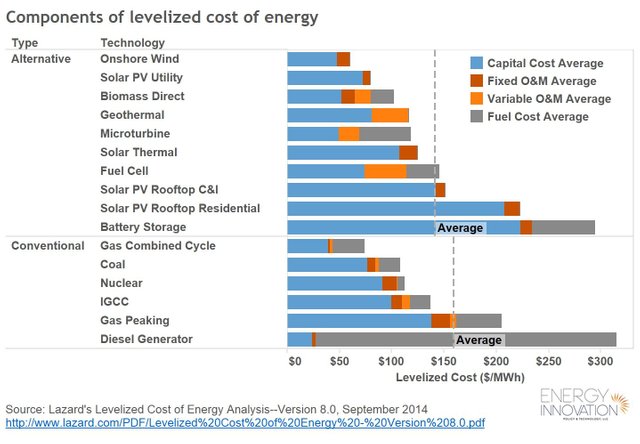ESG/Impact Investment + 4IR = Revolution

Recently, those of us in the ESG/Impact investment world let out a collective sigh of disbelief and anger as President Trump rolled back Obama-Era regulations at the EPA which included a wholesale review of the Clean Power Plan. This effort includes eliminating all language related to the environmental impact of assessing policy for legislators. While we completely anticipated this action, it was still painful to see as much of the progress that had been made at the national political level was completely lost overnight. Despite the uppercut delivered by the Trump Administration, those of us who do vow to defend our planet from further ecological destruction, should still feel a sense of hope, even triumph. There is one thing that trumps (no pun intended) bad policy and that is market forces.
At this moment we are in the middle of two macro-themes happening globally. These themes are a growing awareness of socially responsible (known now as Environmental, Social and Governance or ESG) and impact investing and the Fourth Industrial Revolution (4IR). The 4IR will leverage emerging technology breakthroughs in the fields of artificial intelligence (AI), robotics, the internet of things (IoT), autonomous vehicles (AV), 3-D printing, nanotechnology, biotechnology, materials science, energy storage and quantum computing. The combination of these two forces will combine to create a bad policy fighting super-bot! I don’t know why, but Voltron just came to mind!

Energy
According to International Renewable Energy Agency, 161GW of renewable energy went on-line in 2016 an 8.7% increase year-over-year. Of that 2016 total, 71GW was solar, 51GW was wind, 30GW was hydropower and 9GW was bioenergy. That puts the total global capacity at 2,006GW enough to power almost 1.5 billion homes worldwide.

Solar panel makers such as Yingli, Canadian Solar and SunPower and wind turbine makers such as Vestas Wind Systems, GE and Goldwind provide the important technology and hardware needed to harvest energy from these renewable sources. Now let’s layer in on-board software platforms from the likes of entrenched giants such as Google or IBM or start-up players like DataRobot that collects data from weather satellites, weather stations and other renewable power sources that would enable the optimization of solar and wind energy addressing the issue of intermittency and the energy duck curve. Let’s also imagine drones from Insitu or CyPhy deploying across utility-scale solar panel and wind turbine installations that can respond to operational issues detected by software from Trifacta and can conduct minor repairs in a fraction of the time. Instead of waiting for much needed parts to arrive from manufacturers, renewable energy owners and operators can “print-out” these replacement parts using the latest in high-tensile strength materials such as graphene on site using 3-D printing technology from companies such as Stratasys, or 3D Systems. And when the sun does not shine or the wind does not blow, we have that energy stored in batteries made by Tesla or Sonnen at home or Enersys at the utility level.
From a developing or underserved market perspective; imagine Pay-Go energy services using companies such as M-KOPA Solar (provider of affordable solar power to low-income households) and M-PESA (provider of mobile payment solutions for the un and underbanked populations) working together using IoT sensor systems to provide energy to customers only when they need it using a seamless payment infrastructure.

From the graph above, we can see that the cost of onshore wind and utility solar PV are cheaper than conventional coal-fired plants (we are already winning)!
Water
Water is one of the greatest challenges of our time. As we all know, despite three-quarters of the earth’s surface is occupied by water, currently approximately 0.37% of that is potable and safe for human consumption. What does this equate to; currently 1 in 10 people or 663 million people lack access to clean water. With increased industrialization, global droughts, resource mis-pricing and inefficient use of this precious resource, these dire statistics will only get worse unless we consciously drive capital and technology to address this important human issue.

Global companies such as Veolia and Suez provide utility-scale water management for municipalities which uses waste-water treatment chemicals from companies like Ecolab and passes through onsite-piping, valve and membrane infrastructure provided the likes of Pentair and Xylem. However, the transmission of water from water utilities pass through centuries-old piping owned by cities. Imagine an autonomous robot, roaming through these decrepit piping systems to assess the health and monitor the risk of this critical infrastructure, a robot from HiBot may be just the answer! The supply/demand of our water resources is notoriously difficult to asses, SpaceTime Analytics is using nano-satellites with AI technology on-board to assess the variability of demand and supply drivers of the planet’s water resources. This would allow us to manage the deployment of water resources more efficiently using data-based decisioning.
Natural Infrastructure
Investing in natural infrastructure has historically been taken on by states, national governments and NGOs such as the Nature Conservancy however, what if we could all partake in the investment in the conservation of our precious natural resources.

The Natural Capital Alliance (ACA) has been working to apply bitcoin technology to democratize and increase investments in natural capital. Their goal is to apply bitcoin and blockchain technology to protect bio-assess such as rainforests, mangroves and coral reefs to name a few. Through the Initial Coin Offering (ICO), colored coins will be issued according to the effort supported. Valuation will be set by pre-determined conservation standards coded in to a smart contract constructed on a platform such as Ethereum. Valuation of the coins will encourage positive conservation outcomes for each of the identified bio-assets. This approach will allow for democratized, immutable asset verification and the opportunity for portfolio diversification for everyone!
The Future
Excitement about the future is an understatement. The conservation and 4IR revolutions are well under way with massive market support despite recent political maneuvering from the likes of Mr. Trump. Technologists, financiers, entrepreneurs…let’s continue to innovate and deploy our intellectual and monetary resources to solve our most pressing issues and fight for our future. There may be some headwind today, but we will prevail!